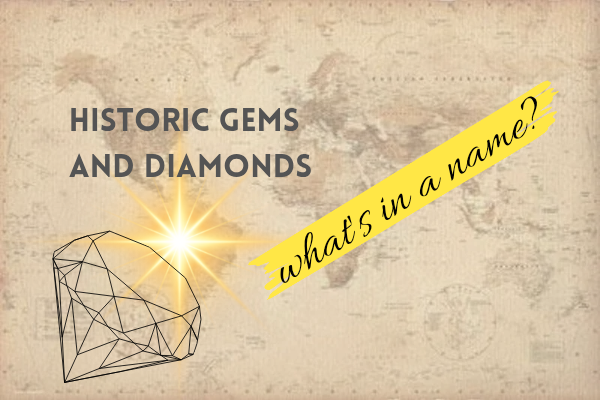When an elusive historic gemstone resurfaces after decades—or even centuries—of silence, it often sets off waves of excitement and speculation among experts, collectors, and historians. These rediscoveries are rarely straightforward. One of the most contentious issues is the correct identification and naming of the gemstone.
ZANSKAR CROWN SAPPHIRE
A fine Kashmir blue sapphire sold by Maharaja Pratap Singh around the early 1920s, is a good example. The Maharaja who was then the ruler of Kashmir, sold the big cushion cut Kashmir sapphire to a European collector. The proceeds of the sale, were earmarked for the development of the Kashmir region. Rumors put the weight of the sapphire at around 170 to 220 carats – it is quite clear that much information needs to be revealed and gathered. Details of the buyer were never revealed and this, is not uncommon when it comes to direct sales and transfers.
A century later rumors are heard about the historic blue sapphire, having been traced to a collection in Europe. The Kashmir sapphire is being referred to as the Zanskar Crown – this after the location (Zanskar in Kashmir), where it was very likely mined. While a few people mistook the name for a mountain range in Kashmir, a group of diamond collectors recall that, the big cushion sapphire was named Zanskar Blue by Maharaja Pratap Singh.
UNRECORDED TRANSACTIONS
Over the course of its journey through time, such a gem would have typically changed hands many times, with much of its transactional history undocumented. This creates a complex puzzle, where experts must piece together fragmented evidence to confirm the gemstone’s true identity and provenance. While the importance of the original name assigned to the gemstone, cannot be discounted – a comparison of other features is what expert collectors put initial focus on.
IDENTIFICATION PROCESS
The first step in this identification process involves a meticulous comparison between the characteristics of the traced gemstone and the rumored or recorded features of the historic gem in question. These features might include the gemstone’s color, clarity, carat weight, cut, origin, or any unique inclusions or traits documented in archives, personal accounts, or early gemological records. It is not uncommon for some gemstones to gain added value when, their origin is traced to a specific location or region. Advanced testing methods and intensive research, enable a few testing laboratories to accurately identify the origin (mining) location of a precious stone.
A Golconda origin for diamonds, a Kashmir origin for blue sapphires and a Burmese origin for rubies – are considered to be highly sought after. The May 2025 auction for the Golconda Blue Diamond, was highly publicized and awaited. It is not often that the owner of a diamond from the famed Golconda mines, is willing to sell his diamond. Interestingly Christie’s announced a cancellation for the Golconda Blue Diamond auction, a couple of weeks before the fixed auction date. Rumors about the Zanskar Crown Sapphire, have drawn much attention – this even when, no clear indication of an intent to sell has been revealed. The big sapphire has its origin in the Kashmir mines.
DETERMINING ORIGIN
Advanced gemological testing and trace element analysis may also help in determining the likely geographic origin of the gemstone, which can further strengthen or weaken claims of identification. Once the physical and historical attributes have been scrutinized, debates often shift to the gemstone’s name. Historic gemstones frequently carry names that reflect their owners, places of discovery, unique features, or the legends surrounding them. The Golconda Blue Diamond quite obviously, gets name from the region in which it was mined. The same is true of the Zanskar Crown sapphire, the name was inspired by the Zanskar location in Kashmir.
DEBATES ON NAME
However, a gemstone that has passed through many hands may have acquired multiple names over time. This is particularly true in cases where ownership shifted across different regions, languages, or royal families. Experts might disagree whether it is the original name or a subsequent name under which, the precious stone earned fame, that should be defined as the primary name of the gemstone or diamond.
The naming debate becomes even more complicated when the gemstone has royal provenance. Royal families were under no obligation to disclose their personal assets in detail. Transactions between monarchs, aristocrats, or their intermediaries were often carried out discreetly, sometimes as gifts, diplomatic exchanges, or private sales. In the case of the Zanskar Crown most narratives align with the theory, that it was Maharaja Pratap Singh who named the big Kashmir sapphire. The Maharaja had inherited the cut and polished blue sapphire, from his predecessor – Maharaja Ranbir Singh.
A rough Kashmir blue sapphire weighing over 500 carats, was sent to some of the most experienced European cutters by Maharaja Ranbir Singh. The finally cushion cut sapphire was absolutely amazing and impressed even, seasoned gemstone experts. It is claimed that the fine Kashmir blue sapphire, was kept in the Maharaja’s treasury and was never worn by him. While it is possible that the Maharaja or his senior advisors, casually referred to the sapphire as, the Zanskar Blue. However the general belief is that it was Maharaja Pratap Singh, who gave the name Zanskar Crown to the gemstone. The Maharaja wore the big sapphire in an opulent necklace.
SUMMARY
Ultimately, the identification and naming of a rediscovered historic gemstone requires a careful blend of science, scholarship, and historical analysis. While consensus may eventually emerge through accumulated evidence and expert agreement, some cases remain unresolved, with competing claims persisting indefinitely.
Such debates only add to the allure and mystique of historic gemstones, reminding us that these treasures are not merely objects of beauty—they are witnesses to centuries of human history, intrigue, and legacy

